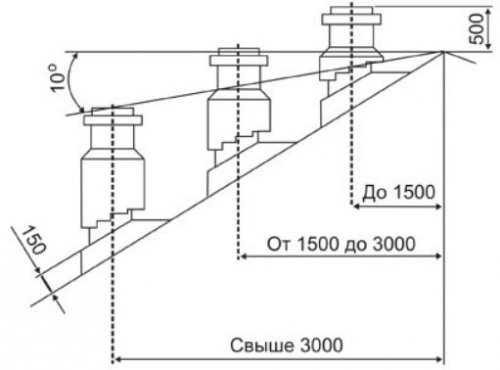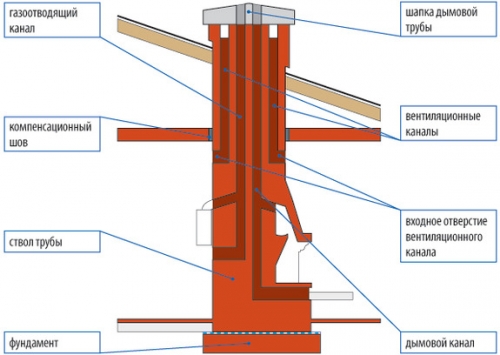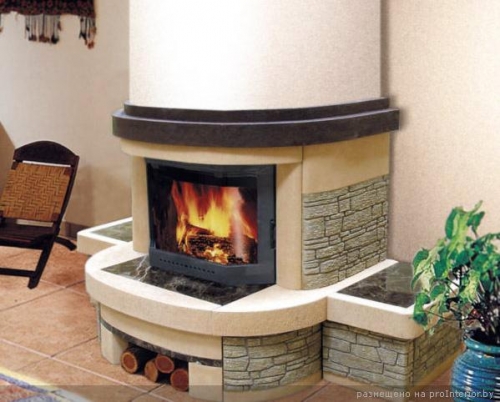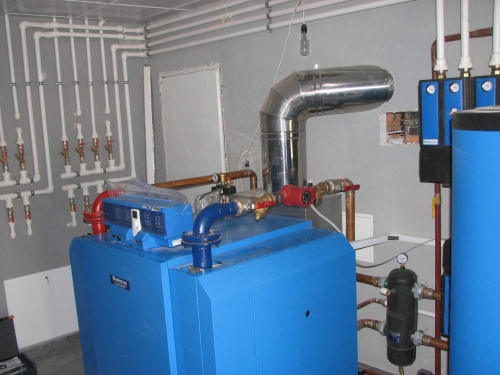The kitchen is the place where the family spends the best time for a joint dinner ...
|
|
In modern construction of private houses, you can not do without insulation of the attic ... |
Once, preparing a foundation for a foundation for a foundation for a foundation, you found that the soil is getting weaker in ... |
Chimneys: Purpose and Classification

You dream of your own country house in which you will enjoy the silence and quiet howl of wind in the pipe by the fireplace by the fireplace on the fireplace. You have already decided which house will build, and where to put the fireplace. The normal functioning of the fireplace requires a mandatory installation of a chimney with your own hands. In this article, we will highlight the basic issues of the correct and safe device of such systems, and tell you how to make a chimney yourself. If you fulfill all the recommendations carefully, you will succeed.
Table of contents:
- The purpose of the chimney
- Types of chimneys
- The characteristics of the chimney
- Summary construction: Basic rules
The purpose of the chimney
The chimney is called the vertical pipe of the round or square section, which serves to remove fuel combustion products from the heating unit to the atmosphere. The product is intended for natural thrust, so that air for combustion products enters the furnace, and the smoke gas is excreted from it. The main parameters of a good chimney are: perfect craving, high -quality combustion of fuel, quick warming up the walls and overcoming the condensation threshold.
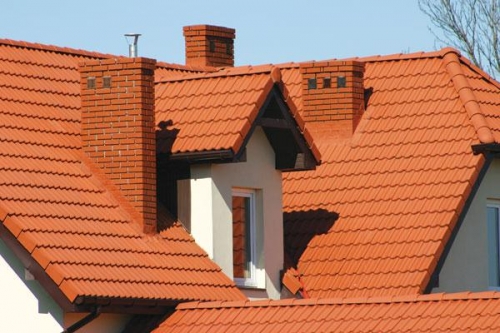 A competently mounted system for the removal of combustion products in a modern dwelling is able to protect the owners from excessive troubles. Its advantages also consists in the fact that it most optimally distributes the heating flows of air. Incorrect arrangement of the chimney provokes undesirable smoke, the appearance of reverse traction, or even a threat of fire in it. Important statistics show that problems in heating became at all times the main reason for fires in country houses.
A competently mounted system for the removal of combustion products in a modern dwelling is able to protect the owners from excessive troubles. Its advantages also consists in the fact that it most optimally distributes the heating flows of air. Incorrect arrangement of the chimney provokes undesirable smoke, the appearance of reverse traction, or even a threat of fire in it. Important statistics show that problems in heating became at all times the main reason for fires in country houses.
Types of chimneys
The chimney is one of the main elements of the boiler room, because neither the heating boiler, nor the gas column, nor the fireplace can do without it. To create discharge in the heating unit that provides the combustion process, different types of chimneys are used.
Typical classifications of chimneys
By location, the channels that are used to remove smoke are wall, that is, located inside the capital walls, indigenous, which are isolated in the form of a separate riser, and external, which are located on the facade of the building. For rooms with brick walls, the first option is most economical and convenient, since it does not need additional materials, they make a chimney with their own hands simultaneously with the walls when building a building.
Heating devices according to the method of removal of gases are divided into two groups: with natural and forced traction. In the first case, the removal of gases occurs at the expense of the built -in fan in the boiler, in the second with the help of traction, which is created in the chimney. For a heating system with forced traction, it is better to install a compact coaxial chimney.
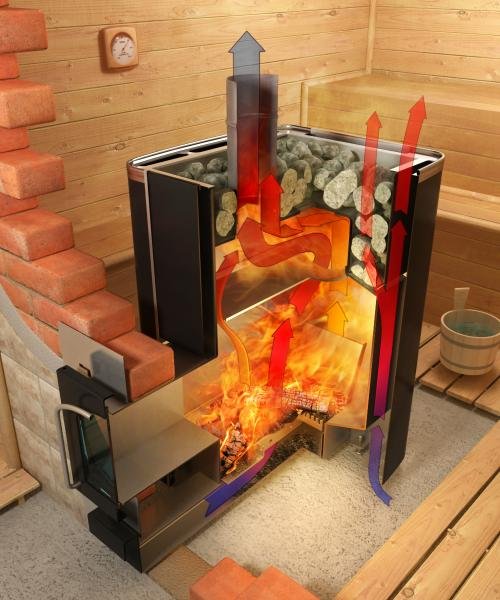
A single -walled chimney is a stainless pipe, which has a thickness of 0.6 1.0 millimeters. Such pipes are customary to use for the location inside the house, or inside the brick channels, because due to their heat transfer, the room can be additionally heated. Double -walled pipes have two layers of stainless steel, between which there is a layer of insulation - non -combustible basalt wool. Also, stainless steel is often placed in a zinc casing. Most often, double -walled pipes are used to arrange chimneys outside the house or inside wooden buildings.
Classification of chimneys by material
The main advantages of brick chimney are a long service life and refractory, and the lack of an uneven inner surface, which causes the precipitation of soot. The pipe is overgrown gradually and traction decreases. Brick chimneys are customary to install at the stage of construction of the house.
Brick channels for the removal of smoke are distinguished by good refractory, as well as resistance to condensate and external influences. It is possible to install such a chimney on the facade or inside the building. The main drawback of the design is the complexity of installation work, as well as in considerable weight. This is due to metal rods that pass inside the product.
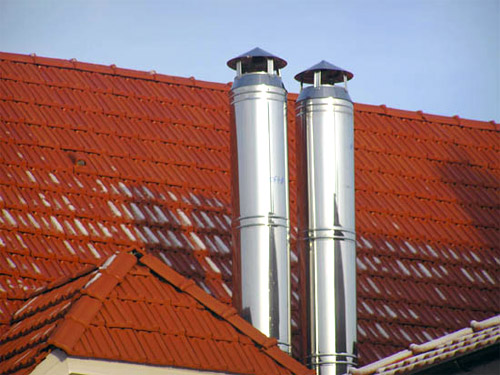
Welded chimneys from steel pipes are corroded. If there are a certain amount of sulfur oxides in emissions, then these substances are connected to condensate and eventually form sulfuric acid that destroys the pipes. The installation of such chimneys is a long and very time -consuming process.
Stainless chimneys have all the properties of a good chimney: they are durable and easy to install, easier than brick, are not corroded. Chimmers made of stainless steel can be laid through wooden floors. Pipe modeling and chimney repair with your own hands are possible in place.
The characteristics of the chimney
The optimal shape of the channel for the removal of smoke is the cylinder based on the fact that the more barriers that are caused by angularity, the more difficult it is to go and the more to deposit on the walls of soot. The dimensions of the chimney are determined by the height and diameter of the structure.
The diameter is calculated taking into account the power, the width of its output, the nature and number of barriers on the path of burning gases. The height of the chimney is calculated according to the construction standards, taking into account the height of the building, such as the roof and dimensions of neighboring buildings. It is important to observe when designing the requirements for horizontal sections of the chimney. Their length should not be more than 1 meter, because warm air moves vertically.
In the figure below your attention is presented distances that are recommended to observe:
- when installing a chimney on a flat roof, the pipe should perform at a height of at least 500 millimeters;
- when placing a pipe at a distance from the ridge is less than 1.5 meters, the pipe height should be at least 500 millimeters in relation to the skate;
- when the chimney is located at a distance of 1.5 - 3 meters from the ridge, it should be not lower than the skate;
- when placing a chimney at a distance of 3 meters and more from the skate, it should be not lower than the line, which is drawn from the skate to the horizon at an angle of 10.
Connection of a fireplace of a fireplace or boiler to a chimney is often associated with problems of non -compliance with diameters. In this case, it is customary to use a reduction adapter. The area of \u200b\u200bconnection of the chimney with the equipment must be treated with a special sealant. Further assembly of the chimney is carried out with an extension up along the condensate, so that the condensate does not reach the outer wall of the pipe.
Summary construction: Basic rules
The mistakes that were made in a chimney are fraught with serious consequences. Remember that when building a chimney with your own hands, it is important to observe all construction requirements and norms. Some consequences of illiterate design become the cause of expensive remaking the chimney, while others provoke poisoning with combustion products or fires.
Experts do not recommend using materials that are not intended for this purpose, for example, aluminum and asbestos. Changing the diameter of the pipe during useful operation without involving specialists at least reduces the efficiency of the heating system. The load on the base of the chimney should not be greater than the value, which can lead to the destruction of the building.
Several installations can be combined into one chimneine network only if there are confirming calculations that are made by a specialized specialist. Among the most dangerous mistakes, the following are distinguished: insufficient thermal insulation of the pipe, which leads to the carbonization of adjacent materials and their fire; the use of ventilation ducts to remove smoke; Unauthorized repair and modification without preliminary calculations.
Stoves chimneys
The construction of the chimney for the furnaces is tightly regulated by building codes. So, one furnace is recommended to build no more than 3 rooms for heating, which are located on one floor. In two -story houses, two -tier furnaces with separate fuel and chimneys for each floor are allowed.
The smoke channels of the furnace can be placed in the outer walls of non -combustible material. In the absence of walls where you can place a chimney, it is customary to use indigenous and nozzle chimneys to remove smoke. As a rule, for each furnace, a separate pipe or separate channel is made. Two furnaces can be attached to one pipe, which are located on one floor. By connecting two channels, it is necessary to provide cutting, which have a thickness of 0.12 meters and a height of at least 1 meter from the bottom of the pipes.
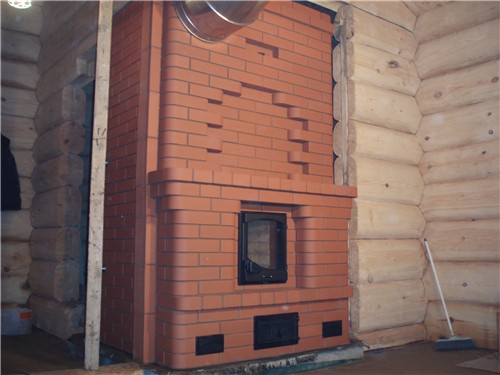
Smoke pipes are designed vertically without ledges. Deviations of the chimney from the vertical by 30 degrees are acceptable, with a slope of no more than 1 meter. The inclined areas should be made smooth. Smoke pipes on houses with roofs of combustible material should be equipped with sparkles made of a metal mesh, in which there are holes, which have a size of not more than 5 by 5 millimeters.
The designs made of difficult or fuel material that adjoin the stoves, ventilation canal and smoke pipes should be protected from fire using non-combustible materials, and the formed gaps between the walls, partitions, ceilings and cutting are recommended to be filled with non-combustible material. The distance from concrete or brick chimneys to difficult and combustible roof elements should be at least 130 millimeters, from a ceramic pipe without insulation of 250 millimeters.
Smokewood for fireplaces
The requirements for chimneys for the fireplace are echoed with the conditions that are presented to the stoves. The fuel is the same, the principle of operation of heating systems is similar. For example, fireplaces are often used for heating. But if we are not talking about a large-scale heating, then you can do with a radiator pipe, which is a special device of plates that increase the area of \u200b\u200bheat transfer.
As in the remaining designs of chimneys, the smoke from fireplaces should be diverted in a simple way. It is better if you build a direct vertical chimney that has a height of more than 6 meters. You can make a more complex design, in which there are taps with an acute angle of less than 45. If there is a need, you need to use a knee and install a tee, which facilitates access during subsequent cleaning.
The corresponding level of thermal insulation is also important. Smoke heats the pipe, which means that it is necessary to protect the ceilings and wall materials from the fire. If a sandwich dizzymhod passes near a tree or plastic, it is customary to isolate it with material on the base of the base. The passage of the chimney should be protected from the cold. For example, it is not allowed to place a single -walled pipe made of stainless steel on the street. Protect the chimney with an installed weather vane or fungus.
A hard -fuel and gas boiler chimney
Heating boilers that operate on solid fuel are close to fireplaces and stoves, as well as gas boilers. With the first group, they are combined by a tree as a general type of fuel and a common need to clean the apparatus from ashes, with the second similarity in the distribution of energy for heating. The chimney construction scheme for solid fuel boilers in general terms is similar.
The chimney for gas boilers should in its design have a channel to one channel, it is allowed to connect two devices, which are located at a distance of at least 750 millimeters. Be sure to build a sealed chimney to prevent a leakage of carbon monoxide, and a structure resistant to condensate. Modern high-performance gas boilers produce 1-3 thousand liters of condensate per year, and due to the low temperature of the output gas, condensate cannot evaporate, but flows along the walls of the chimney, penetrating and destroying the brick.
You can not worsen the chimney craving for a gas boiler. The ideal cross section for the exhaust channel is round. An uneven or rough inner surface of the pipe worsens the craving. The cross section of the channel for removing smoke should not be less than the diameter of the gas outlet on the connected devices. For example, if the diameter of the output on gas boilers is 150 millimeters, then the diameter of the exhaust channel should not be less than 150 millimeters. A similar chimney should go into the sky, without the presence of coverage and visors.
Chimney for sauna and bathhouse
The firebox and chimney of the Russian bath or Finnish sauna require thermal insulation. The floors are customary to isolate by analogy with the above -described chimneys, and the wall material next to the firebox must be closed with metal sheets. Excess heat secreted by the chimney can be used for business.
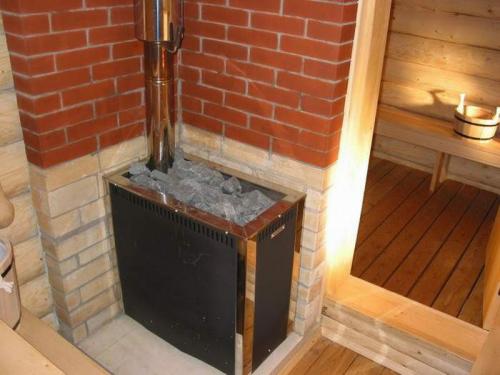
The use of a metal mesh is considered a popular option for increasing efficiency, where stones are poured, which are able to envelop a hot chimney and roll. Another addition is a combustion intensity regulator. At the required level, the combustion of the chimneys should be maintained, without releasing all the heat to the street and creating the temperature in the room is close to 7080 degrees Celsius. It is clear that there can be no talk of smoke in the steam room.
Thus, you got acquainted with the intricacies of the device of the functional and technically correct chimney and watched the video of the installation of the chimney with your own hands. Each option has its own subtleties of installation and needs consulting with a specialist. Follow the main subtleties of installing the channel to remove smoke, and the heating system in your house will work with high efficiency.

